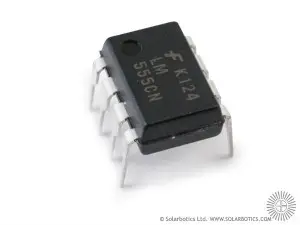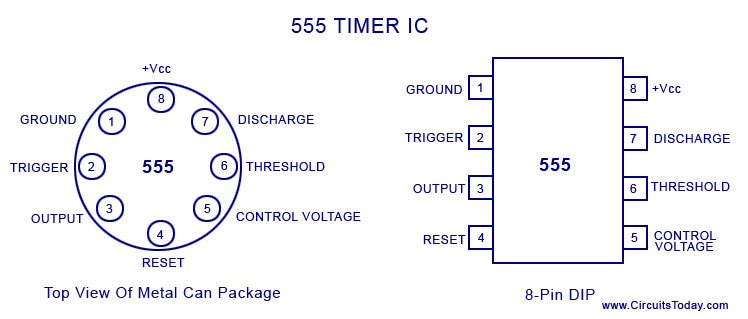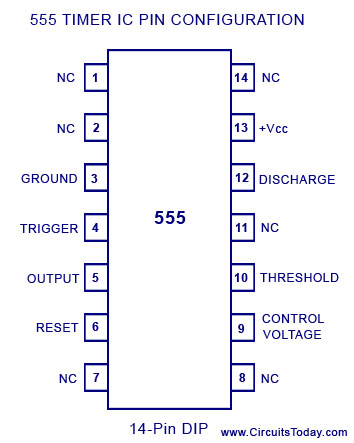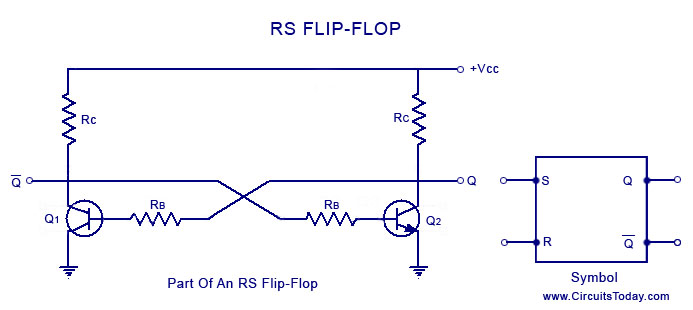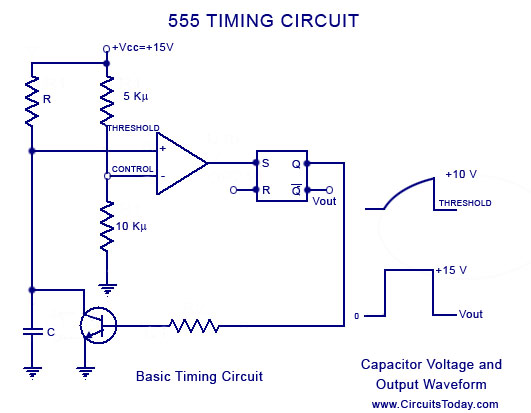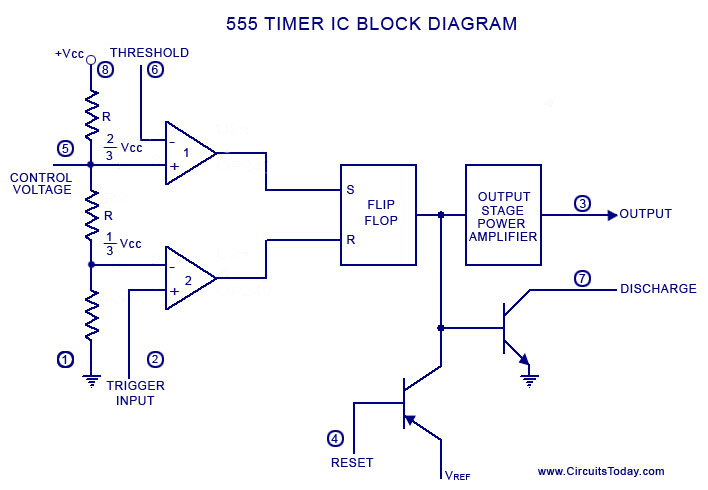ELECTRONICSROCK
a place to learn,discover and show urself in the era of ELECTRONICS
Monday 5 November 2012
Monday 29 October 2012
Introduction of filter
Filter is a frequency selective circuit that is capable of passing signals with certain selected frequencies
while rejects signal of all other frequncies
and this property of filter is called frequency selectivity
while rejects signal of all other frequncies
and this property of filter is called frequency selectivity
Thursday 25 October 2012
Pin diagram and description of 8085
Pin diagram of 8085 Microprocessor with Description

8085 is a genral purpose microprocessor having 40 pins and work on single power suplly

Power Supply Signal and clock signal:
VCC:-Vcc is to be connected to +5V power supply.
Vss:-Ground reference
X1 and X2:- This pin is used for providing the clock frequency to the microprocessor. Generally Crystal oscillator or LC oscillator is used to generate the frequency. The frequency generated here is internally divided into two.As we know that the basic operating timing frequency of the microprocessor is 3 MHz so
6 MHz frquency is applied.
Serial Input Output port:-
SID and SOD:-These pins are used for serial data communication.
Interrupt Signal:-
Pin 6 to 11:- These pins are used for interrupt signals. Generally and external devices are connected here which requests the microprocessor to perform a particular task.
There are 5 pins for hardware interrupts-
TRAP
VCC:-Vcc is to be connected to +5V power supply.
Vss:-Ground reference
X1 and X2:- This pin is used for providing the clock frequency to the microprocessor. Generally Crystal oscillator or LC oscillator is used to generate the frequency. The frequency generated here is internally divided into two.As we know that the basic operating timing frequency of the microprocessor is 3 MHz so
6 MHz frquency is applied.
Serial Input Output port:-
SID and SOD:-These pins are used for serial data communication.
Interrupt Signal:-
Pin 6 to 11:- These pins are used for interrupt signals. Generally and external devices are connected here which requests the microprocessor to perform a particular task.
There are 5 pins for hardware interrupts-
TRAP
RST7.5
RST 6.5
RST5.5 and INTR
INTA is used for acknowledgement. Microprocessor sends the acknowledgement to external devices through the INTA pin.
Address Bus and DATA Buses:-
AD0-AD7:-These are multiplexed address and data bus. So it can be used to carry the lower order 8 bit address as well as the data. Generally these lines are demultiplexed using the Latch.
During the opcode fetch operation, in the first clock cycle the lines deliever the lower order address bus A0-A7.
In the subsequent IO/M read or write it is used as data bus D0-D7. CPU can read or write data through these lines.
A8-A15:-These are unidirectionl
INTA is used for acknowledgement. Microprocessor sends the acknowledgement to external devices through the INTA pin.
Address Bus and DATA Buses:-
AD0-AD7:-These are multiplexed address and data bus. So it can be used to carry the lower order 8 bit address as well as the data. Generally these lines are demultiplexed using the Latch.
During the opcode fetch operation, in the first clock cycle the lines deliever the lower order address bus A0-A7.
In the subsequent IO/M read or write it is used as data bus D0-D7. CPU can read or write data through these lines.
A8-A15:-These are unidirectionl
And address bus used to address the memory location.
Archiechture of 8085
The fuctional block diagram or architechture of 8085 microprocessor is very important as is gives the complete details about 8085 microprocessor

Tuesday 23 October 2012
Norton's Theorem
Norton's Theorem

Circuit Description:
These circuits demonstrate Norton's theorem, which states that any combination of voltage sources, current sources, and resistors can be reduced to a single current source and a single resistor. So, the scary-looking circuit on top can be reduced to the equivalent circuit on the bottom.
Thevenin's Theorem
Thevenin's Theorem

Circuit Description:
These circuits demonstrate Thévenin's theorem, which states that any combination of voltage sources, current sources, and resistors can be reduced to a single voltage source and a single resistor. So, the scary-looking circuit on top can be reduced to the equivalent circuit on the bottom.
VOltage divider
VOltage divider

Circuit Description:
This is a voltage divider, a simple circuit that can be used to derive a reference voltage from a known supply voltage. In the middle, two equal resistors generate a 5 V voltage from the 10 V supply. On the right, four resistors provide 7.5 V, 5 V, and 2.5 V.
RLC Circuit
RLC Circuit

Circuit Description:
This is an RLC circuit, which is an oscillating circuit consisting of a resistor, capacitor, and inductor connected in series. The capacitor is charged initially; the voltage of this charged capacitor causes a current to flow in the inductor to discharge the capacitor. Once the capacitor is discharged, the inductor resists any change in the current flow, causing the capacitor to be charged again with the opposite polarity. The voltage in the capacitor eventually causes the current flow to stop and then flow in the opposite direction. The result is an oscillation, or resonance.
The voltages and currents in the inductor, capacitor, and resistor are shown in the scopes below the circuit (voltage is shown in green, current in yellow). The resonance frequency depends on the capacitance and inductance in the circuit and is shown in the lower-right corner (as res.f).
After a while, the oscillation will die down, because of the resistor. Close the switch momentarily to get it going again.
The voltages and currents in the inductor, capacitor, and resistor are shown in the scopes below the circuit (voltage is shown in green, current in yellow). The resonance frequency depends on the capacitance and inductance in the circuit and is shown in the lower-right corner (as res.f).
After a while, the oscillation will die down, because of the resistor. Close the switch momentarily to get it going again.
Capacitors
Capacitors


Circuit Description:
This is a simple circuit involving a capacitor, which is a device that stores charge. As current flows into the capacitor, the voltage across the capacitor increases. As its voltage approaches the source voltage (the 5V voltage source shown on the left), the current flowing into the capacitor decreases.
Click on the switch to discharge the capacitor, and then click on it again to charge it again.
The scope below the circuit shows the voltage across the capacitor in green, and the current in yellow
Click on the switch to discharge the capacitor, and then click on it again to charge it again.
The scope below the circuit shows the voltage across the capacitor in green, and the current in yellow
Resistors
Resistors

Circuit Description:
This is a simple resistive circuit. The green color indicates positive voltage, and the gray color indicates ground (or earth). The movement of yellow dots indicates current (in the conventional direction). The left side of the circuit shows a voltage source providing 5 volts, and the current flows through a number of switches and resistors to the right. The amount of resistance in ohms is shown to the right of each resistor.
To turn a switch on or off, just click on it. If you move the mouse over any component of the circuit, you will see a short description of that component and its current state in the lower right corner of the window.
If there is only one switch closed on top and one closed on the bottom, then there is a single path through the circuit, and by Ohm's Law, the current will be equal to 5V divided by the total resistance through the current path.
If there are multiple current paths, you may have you may have resistors in parallel.
To turn a switch on or off, just click on it. If you move the mouse over any component of the circuit, you will see a short description of that component and its current state in the lower right corner of the window.
If there is only one switch closed on top and one closed on the bottom, then there is a single path through the circuit, and by Ohm's Law, the current will be equal to 5V divided by the total resistance through the current path.
If there are multiple current paths, you may have you may have resistors in parallel.
Ohm's law

Circuit Description:
This is a simple demonstration of Ohm's Law. The green color indicates positive voltage, and the gray color indicates ground (or earth). The movement of yellow dots indicates current (in the conventional direction). Current flows from a positive voltage source through one of two resistors to ground. The amount of resistance in ohms is shown to the right of each resistor. The voltage can be controlled using the "Voltage" slider at right.
By Ohm's Law, the current through each resistor will be equal to the voltage divided by the resistance. The resistor at right has 10 times as much resistance, so it will have 1/10th the current.
By Ohm's Law, the current through each resistor will be equal to the voltage divided by the resistance. The resistor at right has 10 times as much resistance, so it will have 1/10th the current.
Monday 22 October 2012
1. Introduction to 555 Timer IC
2. 555 Timer IC Pin Configuration
3. Basics of 555 Timer
4. Block Diagram
5. Working Principle
1. Introduction
One of the most versatile linear ICs is the 555 timer which was first introduced in early 1970 by Signetic Corporation giving the name as SE/NE 555 timer. This IC is a monolithic timing circuit that can produce accurate and highly stable time delays or oscillation. Like other commonly used op-amps, this IC is also very much reliable, easy to use and cheaper in cost. It has a variety of applications including monostable andastable multivibrators, dc-dc converters, digital logic probes, waveform generators, analog frequency meters and tachometers, temperature measurement and control devices, voltage regulators etc. The timer basically operates in one of the two modes either as a monostable (one-shot) multivibrator or as an astable (free-running) multivibrator.The SE 555 is designed for the operating temperature range from – 55°C to 125° while the NE 555 operates over a temperature range of 0° to 70°C.
The important features of the 555 timer are :
- It operates from a wide range of power supplies ranging from + 5 Volts to + 18 Volts supply voltage.
- Sinking or sourcing 200 mA of load current.
- The external components should be selected properly so that the timing intervals can be made into several minutes Proper selection of only a few external components allows timing intervals of several minutes along with the frequencies exceeding several hundred kilo hertz.
- It has a high current output; the output can drive TTL.
- It has a temperature stability of 50 parts per million (ppm) per degree Celsius change in temperature, or equivalently 0.005 %/ °C.
- The duty cycle of the timer is adjustable with the maximum power dissipation per package is 600 mW and its trigger and reset inputs are logic compatible.
2. IC Pin Configuration
The 555 Timer IC is available as an 8-pin metal can, an 8-pin mini DIP (dual-in-package) or a 14-pin DIP.
This IC consists of 23 transistors, 2 diodes and 16 resistors. The explanation of terminals coming out of the 555 timer IC is as follows. The pin number used in the following discussion refers to the 8-pin DIP and 8-pin metal can packages.
Pin 1: Grounded Terminal: All the voltages are measured with respect to this terminal.
Pin 2: Trigger Terminal: This pin is an inverting input to a comparator that is responsible for transition offlip-flop from set to reset. The output of the timer depends on the amplitude of the external trigger pulse applied to this pin.
Pin 3: Output Terminal: Output of the timer is available at this pin. There are two ways in which a load can be connected to the output terminal either between pin 3 and ground pin (pin 1) or between pin 3 and supply pin (pin 8). The load connected between pin 3 and ground supply pin is called the normally on loadand that connected between pin 3 and ground pin is called the normally off load.
Pin 4: Reset Terminal: To disable or reset the timer a negative pulse is applied to this pin due to which it is referred to as reset terminal. When this pin is not to be used for reset purpose, it should be connected to + VCCto avoid any possibility of false triggering.
Pin 5: Control Voltage Terminal: The function of this terminal is to control the threshold and trigger levels. Thus either the external voltage or a pot connected to this pin determines the pulse width of the output waveform. The external voltage applied to this pin can also be used to modulate the output waveform. When this pin is not used, it should be connected to ground through a 0.01 micro Farad to avoid any noise problem.
Pin 6: Threshold Terminal: This is the non-inverting input terminal of comparator 1, which compares the voltage applied to the terminal with a reference voltage of 2/3 VCC. The amplitude of voltage applied to this terminal is responsible for the set state of flip-flop.
Pin 7 : Discharge Terminal: This pin is connected internally to the collector of transistor and mostly a capacitor is connected between this terminal and ground. It is called discharge terminal because when transistor saturates, capacitor discharges through the transistor. When the transistor is cut-off, the capacitor charges at a rate determined by the external resistor and capacitor.
Pin 8: Supply Terminal: A supply voltage of + 5 V to + 18 V is applied to this terminal with respect to ground (pin 1).
3. 555 Timer Basics
The 555 timer combines a relaxation oscillator, two comparators, an R-S flip-flop, and a discharge capacitor.
R-S Flip-Flop: – A pair of cross-coupled transistors is shown in figure. Each collector drives the opposite base through resistance RB. In such circuit one transistor is saturated while the other is cut-off. For instance, if transistor Q1 is saturated, its collector voltage is almost zero. So there is no base drive for transistor Q2 and it goes into cut-off and its collector voltage approaches + VCC. This high voltage produces enough base current to keep transistor Q1 in saturation.
On the other hand if transistor Q1 is cut-off, its collector voltage, which is approximately equal to + VCC, drives the transistor Q2 into saturation. The low collector voltage (which is approximately to zero) of this transistor then keeps the transistor Q2 in cut-off.Depending on which transistor is saturated, the Q output is either low or high. By adding more components to the circuit, an R-S flip-flop is obtained. R-S flip-flop is a circuit that can set the Q output to high or reset it low. Incidentally, a complementary (opposite) output Q is available from the collector of the other transistor.
Figure shows the schematic symbol for an R-S flip-flop of any design. The circuit latches in either two states. A high S input sets Q to high; a high R input resets Q to low. Output Q remains in a given state until it is triggered into the opposite state.
Basic Timing Concept
Figure illustrates some basic ideas that will prove useful in coming blog posts of the 555 timer. Assuming output Q high, the transistor is saturated and the capacitor voltage is clamped at ground i.e. the capacitor C is shorted and cannot charge.
The non-inverting input voltage of the comparator is referred to as the threshold voltage while the inverting input voltage is referred to as the control voltage. With R-S flip flop set, the saturated transistor holds the threshold voltage at zero. The control voltage, however, is fixed at 2/3 VCC (i.e. at 10 V) because of the voltage divider.
Suppose that a high voltage is applied to the R input. This resets the flip-flop R-Output Q goes low and the transistor is cut-off. Capacitor C is now free to charge. As this capacitor C charges, the threshold voltage rises. Eventually, the threshold voltage becomes slightly greater than (+ 10 V). The output of the comparator then goes high, forcing the R S flip-flop to set. The high Q output saturates the transistor, and this quickly discharges the capacitor. The two waveforms are depicted in figure. An exponential rise is across the capacitor C, and a positive going pulse appears at the output Q. Thus capacitor voltage VC is exponential while the output is rectangular, as illustrated in figure.
4. Block Diagram
The block diagram of a 555 timer is shown in the above figure. A 555 timer has two comparators, which are basically 2 op-amps), an R-S flip-flop, two transistors and a resistive network.
- Resistive network consists of three equal resistors and acts as a voltage divider.
- Comparator 1 compares threshold voltage with a reference voltage + 2/3 VCC volts.
- Comparator 2 compares the trigger voltage with a reference voltage + 1/3 VCC volts.
Output of both the comparators is supplied to the flip-flop. Flip-flop assumes its state according to the output of the two comparators. One of the two transistors is a discharge transistor of which collector is connected topin 7. This transistor saturates or cuts-off according to the output state of the flip-flop. The saturated transistor provides a discharge path to a capacitor connected externally. Base of another transistor is connected to a reset terminal. A pulse applied to this terminal resets the whole timer irrespective of any input.
5. Working Principle
Refer Block Diagram of 555 timer IC given above:
Comparator 1 has a threshold input (pin 6) and a control input (pin 5). In most applications, the control input is not used, so that the control voltage equals +2/3 VCC. Output of this comparator is applied to set (S) input of the flip-flop. Whenever the threshold voltage exceeds the control voltage, comparator 1 will set the flip-flop and its output is high. A high output from the flip-flop saturates the discharge transistor and discharge the capacitor connected externally to pin 7. The complementary signal out of the flip-flop goes to pin 3, the output. The output available at pin 3 is low. These conditions will prevail until comparator 2 triggers the flip-flop. Even if the voltage at the threshold input falls below 2/3 VCC, that is comparator 1 cannot cause the flip-flop to change again. It means that the comparator 1 can only force the flip-flop’s output high.
To change the output of flip-flop to low, the voltage at the trigger input must fall below + 1/3 Vcc. When this occurs, comparator 2 triggers the flip-flop, forcing its output low. The low output from the flip-flop turns the discharge transistor off and forces the power amplifier to output a high. These conditions will continue independent of the voltage on the trigger input. Comparator 2 can only cause the flip-flop to output low.
From the above discussion it is concluded that for the having low output from the timer 555, the voltage on the threshold input must exceed the control voltage or + 2/3 VCC. They also turn the discharge transistor on. To force the output from the timer high, the voltage on the trigger input must drop below +1/3 VCC. This also turns the discharge transistor off.
A voltage may be applied to the control input to change the levels at which the switching occurs. When not in use, a 0.01 nano Farad capacitor should be connected between pin 5 and ground to prevent noise coupled onto this pin from causing false triggering.
Connecting the reset (pin 4) to a logic low will place a high on the output of flip-flop. The discharge transistor will go on and the power amplifier will output a low. This condition will continue until reset is taken high. This allows synchronization or resetting of the circuit’s operation. When not in use, reset should be tied to +VCC.
Subscribe to:
Posts (Atom)

